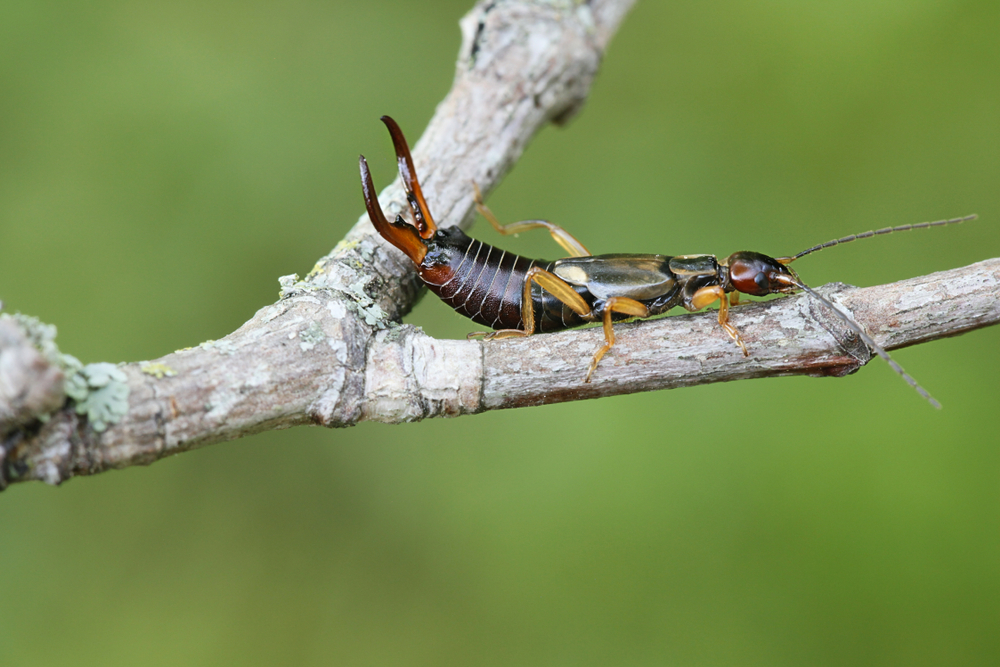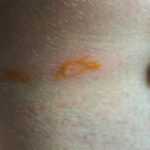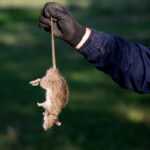Earwig Bug: Identification and Control Tips
Curious or concerned about earwig bugs? Learn what earwigs are, how to identify earwig bugs, and practical methods to control earwig infestations in your home and garden.
Despite their bad reputation, earwigs are largely misunderstood—most negative perceptions are myths, as they pose little actual harm to humans.
The Earwig Species
Earwigs are a remarkably diverse group of insects, with over 2,000 earwig species found across the globe—everywhere except Antarctica. Among these, the European earwig (Forficula auricularia) stands out as one of the most widespread and commonly encountered earwig bug species, especially in North America. Many earwig species share similar habits, such as hiding in moist crevices during the day and emerging at night to feed on a variety of prey, including other insects and plant material.
A unique trait of female earwigs is their maternal care. After laying eggs in protected underground nests, female earwigs tend to their eggs and newly hatched young, guarding them from predators and ensuring their survival until they are ready to fend for themselves. This level of parental investment is rare among insects, and sets earwigs apart from many other species.
Earwigs are easily recognized by the forceps-like pincers at the end of their abdomen. These pincers are used for capturing prey, defending against threats, and even during mating rituals. Some species can also produce a foul-smelling, yellowish-brown liquid as a defense mechanism to deter predators. Whether feeding on plants, hunting insects, or protecting their young, earwigs are fascinating creatures with a range of behaviors that help them thrive in multiple environments.
- Earwigs, identifiable by their pincers and nocturnal behavior, typically inhabit dark, moist locations, making proper identification crucial for earwig bug management.
- Their omnivorous diet allows earwigs to play both pest and beneficial roles in gardens, necessitating a balanced approach to earwig bug control.
- Preventing earwig infestations involves maintaining dry environments and sealing entry points, alongside trapping and considerate use of chemical control methods.
How to Spot an Earwig Bug
Earwigs, commonly referred to as pincher bugs, are easily recognizable by their reddish-brown to black coloring and distinctive pincers located at the end of their abdomen. These pincers, or forceps, are a defining feature and are used in defense and predation, setting them apart from other insects.
There are many earwig species, but the most common in North America is the European earwig. Adult earwigs typically measure about 5/8 of an inch in length and can be spotted by their elongated, flattened bodies. Young earwigs, or nymphs, resemble smaller versions of the adult earwig and are often seen in similar habitats.
If you notice earwigs in your home or garden, it may indicate an earwig infestation. These insects often hide in dark, moist environments during the day and come out at night to feed. Being able to identify these common earwigs is the first step in managing and preventing them from becoming a larger problem.
Behavior and Preferred Habitats
Earwigs are nocturnal creatures, meaning they are primarily active at night. During the day, they prefer to earwigs hide in dark, damp spaces such as decaying wood, plant material, basements, and woodpiles. This behavior can make them difficult to spot unless you know where to look.
These insects thrive in warm, humid environments, which support higher populations. It’s not uncommon to find them in moist environments like under leaf piles, inside flower pots, or beneath lawn furniture. Their habit of seeking shade and shelter in groups during the day is a key behavior to understand when trying to locate and manage them.
Understanding where earwigs live and their behavior is crucial in developing effective strategies to get rid of earwigs. Knowledge of their preferred habitats and social behaviors allows for better prediction of their hiding spots and implementation of control measures.
Life Cycle of Earwig Bugs
The life cycle of earwigs is an intriguing aspect of their biology. Female earwigs lay eggs—between 50 to 90—in underground nests, often in moist soil. This typically occurs in early spring, following the winter period when males and females stay together in nests. These eggs hatch into young earwigs, or nymphs, which undergo five molts before reaching adulthood.
One of the unique behaviors of earwigs is their courtship rituals, which can include elaborate displays. After the eggs hatch, the female earwigs take care of the young until they are ready to fend for themselves. This maternal care is uncommon among many other insect species.
The duration of the earwig life cycle can vary, taking from a few months to over a year depending on environmental conditions. Effective pest control hinges on understanding this life cycle, emphasizing the need to target both adult earwigs and their young to prevent future infestations.
Earwig Feeding Habits
Earwigs are omnivorous, meaning they consume a variety of foods. Their diet primarily consists of:
- Dead or decaying plant matter
- Dead or decaying animal matter
- Live plants
- Other insects
- Earwig feeding
This diverse diet can make them both pests and beneficial garden inhabitants.
In gardens, earwigs are often attracted to and feed on both dead organic matter and living plant material such as vegetables and flowers. Despite their reputation as pests, they play a beneficial role by preying on other harmful insects, thereby helping to control those populations.
Knowledge of their diet aids in managing their presence in your garden. While they may cause some damage to plants, their role in controlling other pests can be beneficial. Balancing their presence through targeted control measures can help maintain a healthy garden ecosystem.
Impact on Gardens and Homes
Earwigs can cause significant damage to garden plants by creating small, ragged holes in leaves, buds, flowers, and fruits. They are known to damage various crops, including corn silks, and can hide inside ripe fruits like apricots and peaches. This feeding behavior can lead to unsightly and damaged plants, affecting both aesthetics and crop yield.
Indoors, earwigs can become a nuisance, especially when they seek shelter in homes during the day. They often enter homes in search of food and shelter, creating an unpleasant situation for homeowners. Understanding their impact on both gardens and homes is crucial for developing effective control strategies.
Planting a butterfly bush in your garden can help attract beneficial pollinators, such as butterflies, which support a balanced ecosystem and may help reduce pest problems.
Protecting Garden Plants from Earwig Bug Damage
Protecting your garden plants from earwig damage starts with vigilance and early intervention. If you notice earwigs around your garden, it’s important to act quickly, as these pests can feed on both decaying plant material and living plants, especially young seedlings and tender shoots. Many species of earwigs are drawn to moist environments and areas with abundant decaying vegetation, making gardens with heavy plant debris particularly attractive.
To get rid of earwigs and prevent them from harming your plants, start by removing plant debris and decaying plant matter from garden beds and around potted plants. This reduces the moist hiding places that earwigs favor. Sealing cracks and crevices in garden structures and using traps—such as rolled-up newspapers or shallow containers filled with vegetable oil—can help capture and control earwig populations.
Physical barriers, like fine mesh or row covers, can be placed over vulnerable plants to prevent earwigs from reaching them. Additionally, encouraging natural predators such as the tachinid fly can help keep earwig numbers in check. Regularly inspecting your garden, especially at night when earwigs are most active, allows you to catch infestations early and take action before significant earwig damage occurs. By combining these strategies, you can protect your garden plants and maintain a healthy, thriving landscape.
How to Get Rid of Earwig Bugs
Getting rid of earwigs requires an integrated approach that combines trapping, sealing entry points, and using appropriate pesticides. Be sure to seal cracks around doors, windows, and foundations to prevent earwig entry. This multi-faceted strategy ensures that you address both the immediate problem and prevent future infestations.
Effective earwig control involves understanding their behavior and habitats, which allows you to target them more accurately. Combining different methods helps reduce their population and minimize damage. The following sections will delve into specific methods for trapping, sealing entry points, and chemical control. You can also use soapy water in shallow containers as a simple, chemical-free way to trap and kill earwigs in the garden.
Trapping Earwig Bugs
Trapping earwigs is an effective method for controlling their populations. One simple trap involves using a shallow can filled with vegetable oil, especially fish oil, which attracts and captures earwigs when placed at ground level. Another effective trap is placing rolled-up newspapers or corrugated cardboard near plants at night.
Placing traps near likely hiding spots like damp soil or vegetation maximizes their effectiveness. Regularly check and replace the traps to maintain control over the earwig population.
Sealing Entry Points
Sealing entry points is crucial to prevent earwigs from entering indoor spaces. Sealing cracks and gaps around windows, doors, and the foundation significantly reduces the likelihood of earwig invasions.
Additionally, maintaining cleanliness around the building’s perimeter by removing organic debris and managing moisture can help prevent earwigs from finding suitable hiding places. These measures are essential for keeping earwigs out of your home.
Chemical Control for Earwig Bugs
Chemical control can be an effective part of an integrated pest management strategy. Insecticides containing spinosad are particularly effective for managing earwig populations. For maximum effectiveness, apply insecticides at night when earwigs are most active, and to minimize harm to beneficial insects.
Judicious use of chemical control ensures it complements other methods without causing undue environmental harm.
Preventing Future Infestations
Preventing future earwig infestations involves maintaining a dry environment, as earwigs thrive in moist conditions. Regularly removing plant debris and organic matter from around homes can significantly reduce earwig habitats. Proper sanitation practices, such as clearing away piles of leaves and debris, are important in preventing earwig infestations.
Additionally, be aware that earwigs often enter homes during colder months or hot, dry spells, seeking shelter and food. These preventative measures reduce the likelihood of earwigs becoming a recurring problem.
Earwig Bugs in Folklore and Myth
The name ‘earwig’ originates from the misconception that these insects would enter the ears of sleeping individuals and burrow into their brains. This myth, documented as early as the writings of Pliny the Elder, has significantly impacted the cultural perception of earwigs. The insect is sometimes referred to as an ‘ear wiggler’, a name that further emphasizes the historical association with the false belief that earwigs crawl into human ears to reside or lay eggs.
In various European languages, the term for earwig reflects this erroneous link to the human ear, highlighting the cultural impact of this myth. Understanding these myths can help demystify earwigs and reduce unnecessary fear.
Earwigs are fascinating insects with unique behaviors and characteristics. By understanding how to identify them, their behavior and habitats, their life cycle, and their diet, you can effectively manage and prevent earwig infestations. Using integrated pest management strategies, including trapping, sealing entry points, and chemical control, is essential for long-term success. It is also important to note that earwigs do not typically spread disease or pose health risks to humans.
For effective pest control, consider contacting Gopher Patrol. They offer comprehensive pest control services that can help you manage not only earwigs but also other pests. With their expertise, you can maintain a pest-free environment.
Frequently Asked Questions About Earwig Bugs
What are earwigs a warning of?
Earwigs in your home may indicate the presence of more hazardous pests like carpenter ants or termites, which can cause significant damage. It is advisable to investigate further to address any potential wood-destroying organisms.
Should you kill earwigs?
You should not kill earwigs as they do not cause harm or destruction in the home; instead, they can be safely removed by sweeping or picking them up and discarding them.
Is earwig harmful to humans?
Earwigs are not harmful to humans as they do not sting, bite, or possess venom. While they may pinch if threatened, any such interaction is typically not dangerous.
What are the common signs of an earwig infestation?
Common signs of an earwig infestation include discovering them in dark, damp areas and observing damage to plants, characterized by small, ragged holes in leaves and flowers. It is crucial to address these signs promptly to prevent further infestation.
Are earwigs harmful to humans?
Earwigs are generally harmless to humans and do not pose a health risk or spread diseases. Their pincers are not a threat to human safety.





